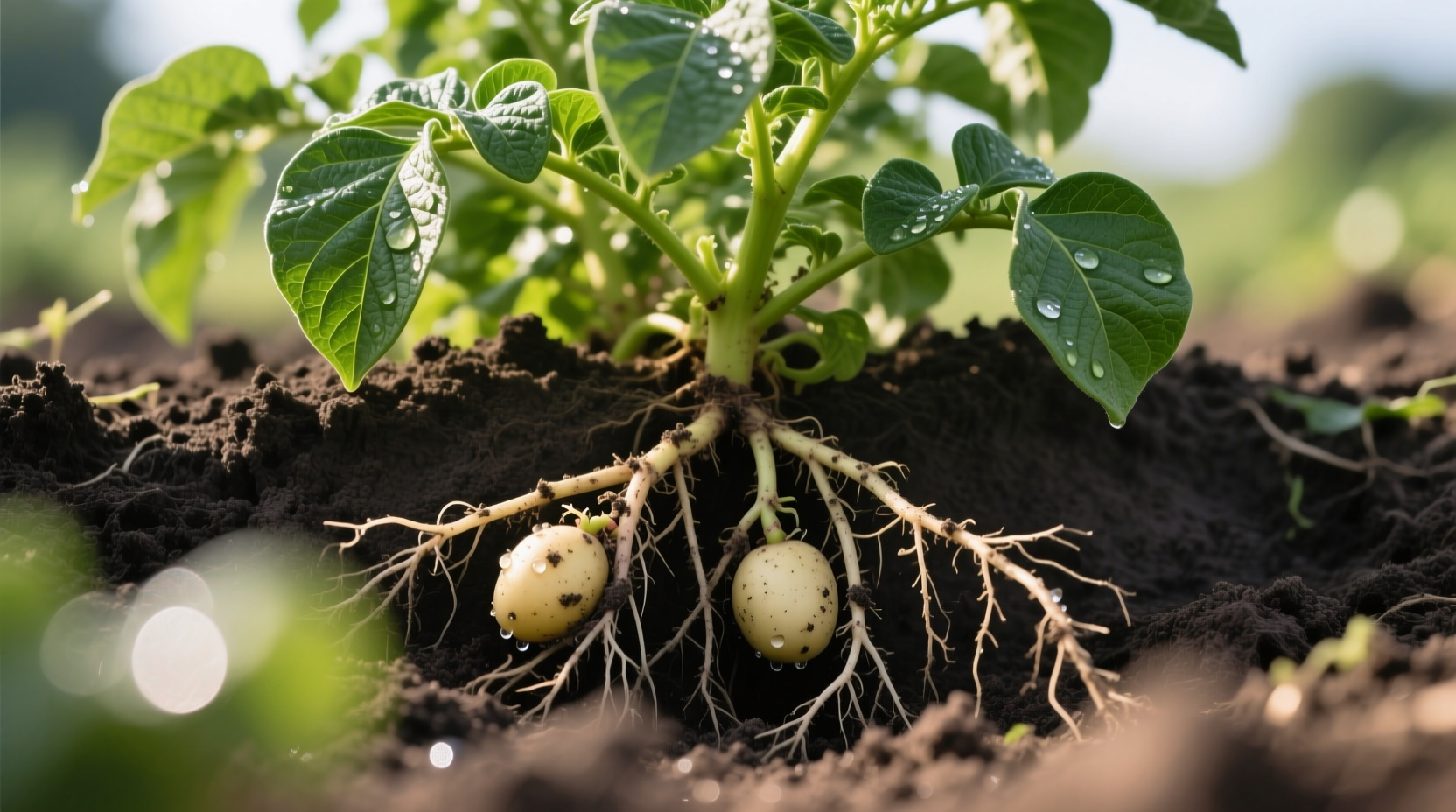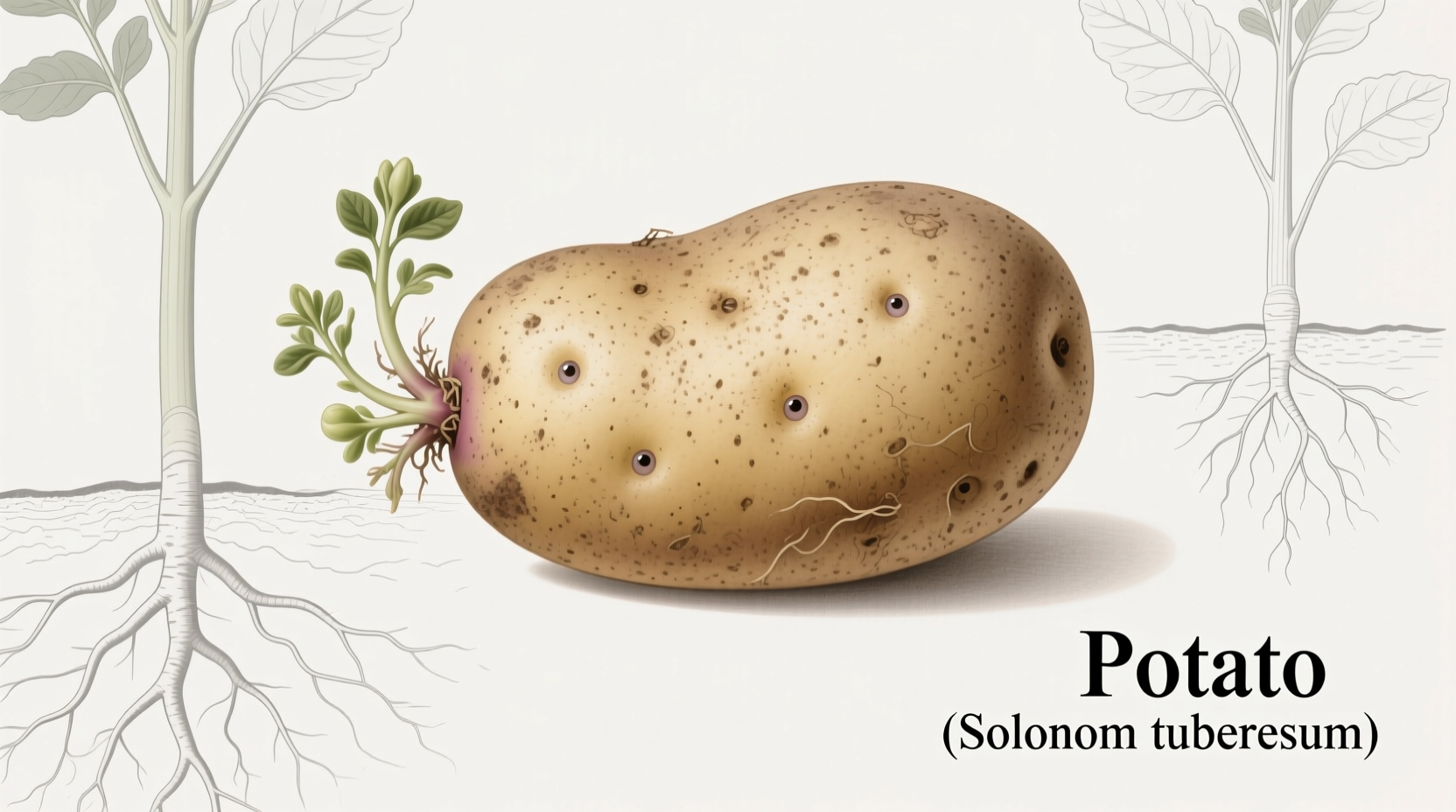The short answer: Botanically, potatoes are tubers (modified stems), not vegetables. However, nutritionally and culinarily, they're classified as vegetables in dietary guidelines like the USDA's MyPlate. This dual classification explains why the question "is potato a vegetable" has such nuanced answers depending on context.
Understanding the Potato Classification Puzzle
When you ask "is potato a vegetable," you're touching on a fascinating intersection of botany, nutrition science, and culinary tradition. Let's break down why this simple question has such a complex answer and what it means for your cooking and nutrition.
Botanical Reality: Potatoes Are Technically Not Vegetables
From a scientific perspective, vegetables are defined as edible parts of herbaceous plants. The confusion arises because "vegetable" isn't a botanical term—it's a culinary and nutritional category. Botanists classify potatoes as tubers, which are modified underground stems that store nutrients for the plant.
Unlike root vegetables (like carrots or beets), potatoes grow from the eyes of existing potatoes and contain the plant's genetic material. This makes them fundamentally different from true vegetables, which typically come from roots, leaves, or flowers of plants.
| Classification Type | Vegetable Status | Scientific Explanation |
|---|---|---|
| Botanical | Not a vegetable | Tuber (modified stem storage organ) |
| Nutritional (USDA) | Starchy vegetable | Grouped with vegetables for dietary guidance |
| Culinary | Treated as vegetable | Used like vegetables in cooking and meal planning |
| Legal (US) | Vegetable | Supreme Court ruling in Nix v. Hedden (1893) |
Why Nutritionists Call Potatoes Vegetables
Despite their botanical classification, major health organizations treat potatoes as vegetables for dietary purposes. The USDA's MyPlate guidelines place potatoes in the vegetables group, specifically in the "starchy vegetables" subgroup alongside corn and peas.
This classification makes practical sense because:
- Potatoes provide similar nutritional benefits to vegetables (vitamin C, potassium, fiber)
- They're typically consumed as side dishes or components of main meals, like other vegetables
- In dietary patterns, they function as vegetable substitutes rather than grain replacements
According to the USDA FoodData Central, a medium potato with skin contains 45% of your daily vitamin C needs and more potassium than a banana—nutrient profiles that align more closely with vegetables than with grains or proteins.
The Historical Context of Potato Classification
Potatoes have undergone an interesting classification journey since their introduction to Europe from South America in the 16th century:
- 1500s-1700s: Initially viewed with suspicion in Europe, sometimes classified as medicinal plants
- 1893: US Supreme Court case Nix v. Hedden legally defined potatoes as vegetables for tariff purposes
- 1940s: USDA begins including potatoes in vegetable recommendations during wartime rationing
- 2007: USDA briefly considered removing potatoes from school lunch programs, sparking debate about their vegetable status
- Present: Recognized as a starchy vegetable in all major dietary guidelines
When Potatoes Aren't Considered Vegetables
Understanding the context boundaries helps clarify the "is potato a vegetable" question. Potatoes function differently from non-starchy vegetables in several important scenarios:
- Diabetes management: Unlike leafy greens, potatoes have a high glycemic index and affect blood sugar more like grains
- Low-carb diets: Keto and paleo diets categorize potatoes with grains due to their carbohydrate content
- Nutrient density comparison: Per calorie, potatoes provide fewer vitamins than broccoli or spinach
- Cooking applications: When made into fries or chips, they're treated as snack foods rather than vegetable servings
This context-dependent classification explains why nutrition professionals might say "potatoes are vegetables" in general dietary advice but recommend limiting them in specific health situations.
Practical Implications for Your Kitchen
Whether you're meal planning, following a diet, or just curious about food science, understanding potato classification helps you make informed choices:
- For balanced meals: Treat one medium potato as your vegetable serving, but pair it with non-starchy vegetables for maximum nutrient variety
- For blood sugar management: Choose sweet potatoes or smaller portions of regular potatoes, and always eat them with protein and healthy fats
- For cooking: Recognize that potatoes function as both vegetables (in stews and roasts) and starches (in potato salads and gratins)
- For gardening: Understand that potato "seeds" are actually pieces of tuber, not true seeds like those of vegetable plants

Why This Classification Matters More Than You Think
The "is potato a vegetable" question isn't just academic—it affects real-world decisions:
- School lunch programs: USDA regulations determine how many vegetable servings come from starchy options like potatoes
- Food labeling: Products can claim "made with vegetables" when containing potato ingredients
- Agricultural subsidies: Potato farmers qualify for vegetable-specific support programs
- Nutrition education: Dietitians must explain why potatoes count as vegetables despite their carb content
According to a CDC analysis of dietary patterns, Americans consume potatoes as vegetables 94% of the time they eat them, demonstrating how firmly this classification is embedded in our food culture.
Final Verdict: It Depends on Your Perspective
So, is a potato a vegetable? The answer depends entirely on your frame of reference:
- Botanist: "No, it's a tuber—a modified stem storage organ."
- Nutritionist: "Yes, it's a starchy vegetable in dietary guidelines."
- Chef: "It functions as both a vegetable and a starch depending on the dish."
- Lawyer: "Yes, per the 1893 Supreme Court decision in Nix v. Hedden."
What matters most is understanding this classification nuance so you can make informed decisions about how to include potatoes in a balanced diet. Whether you're meal planning, following dietary guidelines, or just settling a dinner table debate, recognizing the multiple perspectives on potato classification gives you the complete picture.











 浙公网安备
33010002000092号
浙公网安备
33010002000092号 浙B2-20120091-4
浙B2-20120091-4